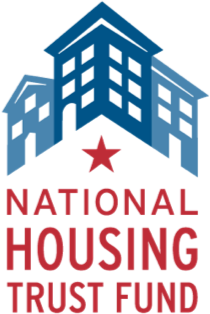-
State Data Overview
Across New Mexico, there is a shortage of rental homes affordable and available to extremely low income households (ELI), whose incomes are at or below the poverty guideline or 30% of their area median income (AMI). Many of these households are severely cost burdened, spending more than half of their income on housing. Severely cost burdened poor households are more likely than other renters to sacrifice other necessities like healthy food and healthcare to pay the rent, and to experience unstable housing situations like evictions.
KeyFacts68,180Or28%Renter households that are extremely low income-41,090Shortage of rental homes affordable and available for extremely low income renters$27,750Average income limit for 4-person extremely low income household$45,359Annual household income needed to afford a two-bedroom rental home at HUD's Fair Market Rent.70%Percent of extremely low income renter households with severe cost burden -
State Level PartnersState Partners
New Mexico Coalition to End Homelessness
P.O. Box 865
Santa Fe, NM 87504
P 505-982-9000
F 888-527-6480
www.nmceh.org
Monet Silva, Executive Director | [email protected]Become an NLIHC State Partner
NLIHC’s affiliation with our state coalition partners is central to our advocacy efforts. Although our partners' involvement varies, they are all housing and homeless advocacy organizations engaged at the state and federal level. Many are traditional coalitions with a range of members; others are local organizations that serve more informally as NLIHC's point of contact.
Inquire about becoming a state partner by contacting [email protected]

-
Housing Trust FundHTF Implementation Information
NLIHC continues working with leaders in each state and the District of Columbia who will mobilize advocates in support of HTF allocation plans that benefit ELI renters to the greatest extent possible. Please contact the point person coordinating with NLIHC in your state (below) to find out about the public participation process and how you can be involved. Email Brooke Schipporeit with any questions.
 Current Year HTF Allocation
Current Year HTF Allocation$3,521,165
HTF State Resources2019
Draft HTF Allocation Plan (PDF)
2018
Annual Action Plan with HTF Allocation Plan on page 139 (PDF)
Notice of Funding Availability, NOFA (PDF)
2017
HUD-approved Annual Action Plan, HTF Allocation Plan pages 114-118 (PDF)
2017 HTF NOFA, pages 145-156 of Action Plan (PDF)
Draft HTF Allocation Plan (PDF)
Final 2017 Annual Action Plan with HTF (PDF)
Notice of Public Hearings for DRAFT 2017 Annual Action Plan
2016
HUD-approved 2016 Allocation Plan (PDF)
NLIHC Summary of the New Mexico draft NHTF Allocation Plan (see attached PDF)
Draft HTF Allocation Plan by New Mexico Mortgage Finance Authority (PDF)
NLIHC Point Person for HTF AdvocacyMonet Silva, Executive Director
New Mexico Coalition to End HomelessnessState Designated Entity:Isidoro "Izzy" Hernandez
Executive Director/CEO
New Mexico Mortgage Finance Authority
505-843-87102
[email protected]Official Directly Involved with HTF Implementation:George Maestas
Development Loan Manager
505-767-2243
[email protected]
Jacobo Martinez
Development Loan Manager
State Entity Webpage
NHTF-specific pages
-
ResourcesResources
Housing Profiles
State Housing Profile
State Housing Profile: New Mexico (PDF) (JPG)
Congressional District Housing Profile
Congressional District Profile: New Mexico (PDF)
Research and Data
National Housing Preservation Database
The National Housing Preservation Database is an address-level inventory of federally assisted rental housing in the United States.
Out of Reach: The High Cost of Housing
Out of Reach documents the gap between renters’ wages and the cost of rental housing. In New Mexico and Nationwide
The Gap: A Shortage of Affordable Rental Homes
The Gap represents data on the affordable housing supply and housing cost burdens at the national, state, and metropolitan levels. In New Mexico and Nationwide
Other Links -
Take Action
-
COVID-19 ResourcesCOVID-19 Resources
Rental Assistance
NLIHC has estimated a need for no less than $100 billion in emergency rental assistance and broke down the need and cost for each state (download Excel spreadsheet).
In response to COVID-19 and its economic fallout, many cities and states are creating or expanding rental assistance programs to support individuals and families impacted by the pandemic, and NLIHC is tracking in-depth information on these programs.
You can use the interactive map and searchable database to find state and local emergency rental assistance programs near you. You can also see the latest news on rental assistance programs through the state-by-state news tracker. Note that this is not a comprehensive list of all rental assistance programs as we continue to update frequently. If you are aware of a program not included in our database, please contact [email protected].
Shelter Closings
Across the country, homeless service providers are struggling to respond to the COVID-19 pandemic. In order to follow public health guidelines and help ensure people’s safety, some shelters are being forced to reduce services, restrict admittance, or close entirely. The loss of these critical resources puts people experiencing homelessness at even higher risk of illness. Check NLIHC's cumulative list of shelter closings.
Below is a list of shelters that have had to majorly alter services or completely close:
The newest shelter in New Mexico, the Española Pathways Shelter, closed. It had opened in a temporary space as a warming center but closed early due to public health concerns. Staff and officials plan to reopen it when their permanent space is ready.
State and Local News
The Bernalillo County Emergency Rental Assistance Program (ERAP) still has funds available. The county has distributed more than $3.7 million in rent relief to more than 531 county residents who live outside Albuquerque. Learn more here.
Updated on May 23, 2022
According to a Searchlight New Mexico analysis, New Mexico landlords sought to evict at least 191 tenants whose rental applications were pending between April and November 2021. In each case, the eviction was filed after the tenant applied for rental assistance but before the funds were distributed.
A new court-based program to help New Mexico tenants behind on their rent and provide landlords with an alternative to eviction will launch in February. The Eviction Prevention and Diversion Program will start in the Ninth Judicial District of Curry and Roosevelt counties on February 1 and expand statewide in March.
Updated on January 30, 2022
New Mexico is one of the last states with a statewide eviction moratorium still in effect, but it is set to expire in January. Housing advocates are anticipating a flood of evictions and an increase in homelessness this winter when the eviction moratorium ends. The New Mexico Coalition to End Homelessness says it is has been harder to track the number of unhoused individuals during the pandemic.
Updated on December 13, 2021
New Mexico agencies are racing to distribute at least $104 million in federal emergency rental (ERA) assistance by September 30 or risk forfeiting funds. As of mid-September, New Mexico has spent or assigned $51 million of ERA.
Updated on October 5, 2021
Despite federal, state, and local eviction moratoriums, thousands of New Mexico residents have faced eviction since the beginning of the pandemic. New Mexico takes little action to track evictions and ensure landlords are complying with the law. Due to the lack of documentation required by the state’s courts, illegal evictions are nearly impossible to verify.
Despite eviction bans, New Mexico landlords and property managers have filed more than 11,000 eviction notices since April 2020. A seven-month Searchlight New Mexico investigation found that hundreds of tenants in Albuquerque alone were evicted or threatened with eviction during the first four months when the CARES Act eviction moratorium was in effect. The largest share of evictions was carried about by a small fraction of landlords.
Updated on August 30, 2021
The Santa Fe Reporter reports that Santa Fe officials included funding for several eviction prevention measures in the proposed city budget for fiscal year 2022, including $75,000 for a tenant/landlord eviction hotline. The budget would add $1.8 million to the Affordable Housing Trust Fund this year, with a significant amount of that money allocated for emergency rental assistance. According to the grassroots advocacy organization Chainbreaker Collective, as many as 5,700 Santa Fe residents could face eviction in the wake of the pandemic. Chainbreaker Collective and the California-based research firm Human Impact Partners hosted a panel on the findings in its report and efforts needed to prevent a crisis when the moratoriums are lifted.
Updated on May 3, 2021
During the 2021 legislative session, New Mexico lawmakers are expected to focus on pandemic relief, including a bill that would modernize the housing code to prevent evictions and a bill to prohibit source of income discrimination. The New Mexico Coalition to End Homelessness supports the modernization bill, as it would help individuals temporarily residing in motels overcome barriers to finding permanent housing solutions.
Updated on February 01, 2021
According to the New Mexico Coalition to End Homelessness, state homeless shelters are concerned about reduced funding amid the ongoing pandemic and surges in homelessness and housing insecurity.
Updated on January 15, 2021
The City of Albuquerque is establishing additional housing options for people experiencing homelessness amid the ongoing pandemic. More than 630 people have been placed in emergency shelters, and four hotels are housing people experiencing homelessness who are elderly or have chronic conditions. A fifth hotel will open on November 30 for at-risk populations like families and seniors who have not tested positive for the coronavirus.
Updated on December 9, 2020
The Santa Fe New Mexican reports the pandemic is exacerbating Santa Fe’s existing affordable housing crisis. While eviction moratoriums have helped many people stay in their homes, some renters have fallen through the cracks of eviction protections. Advocates say the city and state must pursue policy reforms to address Sante Fe’s housing crisis.
Updated on November 10, 2020
After a recent COVID-19 outbreak at the Westside Homeless Shelter in Albuquerque, the city is conducting contract tracing but struggling to reach individuals who may have come in contact. The shelter is not accepting new people, and people who are being turned away from the shelter are sent to other shelters or given hotel vouchers if there no other options.
The New Mexico Mortgage Finance Agency will begin accepting applications for the new COVID-19 Housing Cost Assistance Program on Monday, November 2. The program will provide mortgage and rental assistance to New Mexicans impacted by COVID-19.
Updated on October 26, 2020
Saranam, an Albuquerque nonprofit working to end family homelessness, is bringing 10 new families, including 21 children, into its program. Saranam provides fully-furnished apartments for families and additional resources, such as vocational training, further education, or life skills. The pandemic serves as a reminder that a job and steady income is critical to keeping families from becoming homeless, says the director of the program.
Updated on September 22, 2020
The Albuquerque Journal shares the story of a household evicted for non-payment of rent despite the New Mexico Supreme Court’s order prohibiting evictions throughout the pandemic.
Updated on September 15, 2020
More than 100,000 New Mexico households have been unable to pay rent during the pandemic, and advocates estimate that 71,000 evictions will be filed in the next four months.
The Albuquerque City Council on August 17 approved using $300,000 of federal coronavirus relief funding for eviction prevention assistance programs. Some council members questioned whether the assistance would meet the need for assistance.
Updated on August 25, 2020.
Fifty-two municipalities and 30 counties in New Mexico submitted applications to the state for a share of $150 million in federal coronavirus relief funding. The City of Sante Fe requested $25.1 million, and Sante Fe County requested about $15 million, including $4 million in rental and housing assistance.
Updated on August 19, 2020.
While the temporary eviction moratorium ordered by the New Mexico Supreme Court and the city of Santa Fe remains in place, housing experts warn of a looming eviction crisis.
Updated on August 11, 2020.
The New Mexico Department of Health told KOAT News that the state is using federal funding to convert 18 hotels across the state into non-congregate shelters for people experiencing homelessness, law enforcement officers, health care workers, and members of local tribes.
Updated on July 28, 2020.
Advocates in Albuquerque have protested the city’s decision to continue clearing encampments despite guidance from the Centers for Disease Control and Prevention concerning encampments and the pandemic. The city’s deputy director of housing and homelessness said that the city will not change its policy, even with the recent rise in new COVID-19 cases, citing that encampments pose serious health risks.
Updated on July 20, 2020.
Bernalillo County and Albuquerque Public Schools (APS) are partnering to provide motel vouchers to APS families who have recently become homeless due to the pandemic. Families will also receive assistance in seeking permanent housing and educational support.
Eviction Update
Federal, state, and local eviction moratoriums are rapidly expiring and the CARES Act supplemental unemployment benefits will end soon; at that time, millions of low-income renters will be at risk of losing their homes. The NLIHC estimates at least $100 billion in emergency rental assistance is needed to keep low-income renters stably housed during and after the pandemic. This tracker links to news reports of the growing evictions crisis in various cities and states. Check NLIHC's cumulative list of eviction updates.
More than 100,000 New Mexico households have been unable to pay rent during the pandemic, and advocates estimate that 71,000 evictions will be filed in the next four months.
Updated on August 28, 2020.
While the temporary eviction moratorium ordered by the New Mexico Supreme Court and the city of Santa Fe remains in place, housing experts warn of a looming eviction crisis.
Updated: August 12
State government never suspended evictions; state Supreme Court stayed execution of writs of restitution for nonpayment of rent if the resident can demonstrate a current inability to pay rent, but landlords can still file for eviction and cases can be held remotely or in person.
Updated: August 1
In the third week of July, 29.8% of adults in New Mexico reported they had missed their previous housing payment or had little confidence they would make their next one on time, according to a weekly survey conducted by the Census. In the same survey, 66,818 renters reported they had not paid their previous rental payment.
Albuquerque A local community organizer and her family were evicted from their home on July 6 for non-payment of rent even though the State Supreme Court currently prohibits the execution of evictions for that reason. She was not properly informed that she had to provide written evidence of her inability to pay her rent in order to be protected from eviction. “If this was a real tool that the courts were trying to use, then they would have been sending out this information [about requiring evidence of inability to pay] to families that were being evicted,” she said. July 22 Updated: July 29
According to a weekly survey by the Census, 1 in 5 adults in the state either missed their last housing payment or have little/no confidence of being able to make next month’s housing payment.
Updated: July 16
COVID-19 Resources OtherNational Media
What to Know About Housing and Rent During the COVID-19 Emergency? https://tinyurl.com/y74ox85d
Arbor Realty Trust launched an innovative $2 million rental assistance program to help thousands of tenants and families significantly impacted by the COVID-19 outbreak. Arbor is contributing $1 million to the program and participating borrowers will match Arbor's advances to its tenants in need to help fill the rent gap during the hard-hit months of May and June. Together, the partnership program will provide $2 million in relief. https://tinyurl.com/y9r6x9vb

